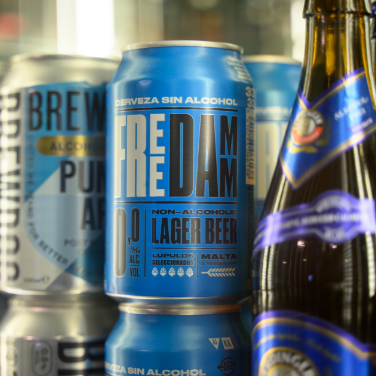Alcohol’s Buzzkill: New Industry Trends and Cancer Research
By Kelley Northam
Last Call for Alcohol?
Have you visited a brewery or bar recently? You may have noticed some new non-alcoholic menu options. The availability of non-alcoholic beers, wines, and mocktails is on the rise. The CNBC article “As booze alternatives take off, more nonalcoholic drink makers promote health benefits as the next buzz” reports that, according to data from NCSolutions, more than 40 percent of Americans planned to consume less alcohol in 2024. This data also notes that 61 percent of respondents from Generation Z (people born between 1997 and 2012) planned to drink less. In fact, according to the consumer insights and data company, Numerator, Gen Zers over 21 consume the least amount of alcohol compared to all other generations.
Since more people of all ages are drinking less, the demand for non-alcoholic beverages, also known as functional beverages, is growing. In fact, the global functional beverage market is projected to reach $249.5 billion by 2026, according to 2022 research by Euromonitor cited by CNBC. Functional beverages include products like probiotic soda, kombucha, and enhanced water, and advertise health benefits like improved digestion, increased energy, and stress relief.
But this doesn’t mean that your favorite bar won’t be packed on a Friday night—many establishments now offer non-alcoholic beverages to appeal to these consumer trends. That said, researchers are still trying to determine the cause of alcohol’s decline. According to the Cleveland Clinic article, “Is Generation Z Drinking Less?,” current theories range from increased mental and physical health awareness to increased cannabis use.
Alcohol’s Cancer Risk
This decline also coincides with new research on the correlation between drinking alcohol and developing cancer. Referencing a large body of scientific evidence, the U.S. Surgeon General recently published an advisory entitled “Alcohol and Cancer Risk.” Cited in this advisory, the National Cancer Institute (NCI) found that consuming alcohol increases the risk of developing seven types of cancer, including:
- Mouth (oral cavity)
- Throat (pharynx)
- Esophagus
- Voice box (larynx)
- Liver
- Breast (in women)
- Colon and rectum
The NCI also found that the more someone drinks, the higher their risk. This applies to those who only have one drink a day and binge drinkers. According to the NCI, women who have four or more drinks in one sitting and men who have five or more drinks in one sitting are considered binge drinkers.
Another study cited in the advisory, “Alcohol and Cancer: Epidemiology and Biological Mechanisms,” originally published in Nutrients, found that there are four main ways alcohol can cause cancer:
- Acetaldehyde: Alcohol metabolizes into acetaldehyde in the liver, which can damage DNA
- Oxidative Stress: Alcohol causes oxidative stress—in other words, an imbalance of free radicals and antioxidants in the body. Oxidative stress is known to harm DNA, proteins, and cells and cause inflammation
- Hormone Levels: Alcohol can cause hormones levels, like estrogen, to fluctuate, changing breast tissue and damaging DNA
- Carcinogens: Alcohol alters mouth and throat cells, which allows carcinogens to be more easily absorbed
This new research may be overwhelming and even frightening, since sharing a drink with friends or loved ones has deep cultural and social roots. However, the advisory suggests that awareness is what’s key. With this new information, you can take control of your risk by considering if (or how much) you want to drink on a given occasion.
Products for All Pours
Both industry trends and cancer research suggest that alcohol may be on its way out. But functional beverages seem to be picking up the tab.
Whether its cocktails or mocktails, the Fisher Scientific channel is here to help you navigate industry and health trends and serve your beverage testing needs. Visit fishersci.com/food-beverage-testing for analysis, safety, and testing products.
Kelley Northam is a Thermo Fisher Scientific staff writer.
